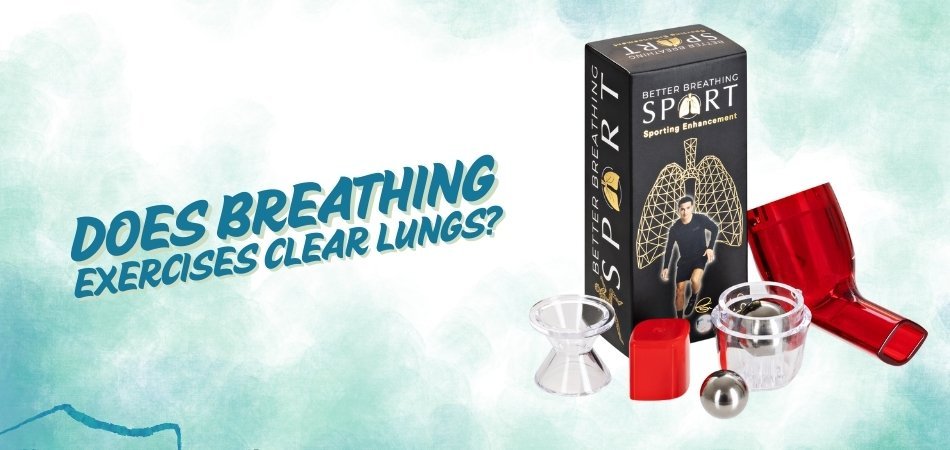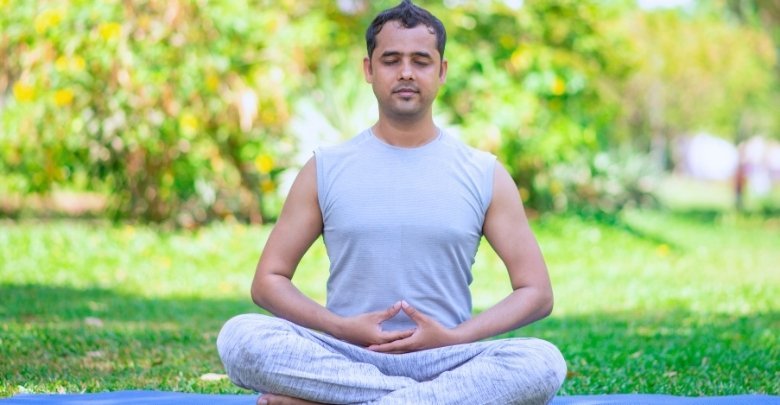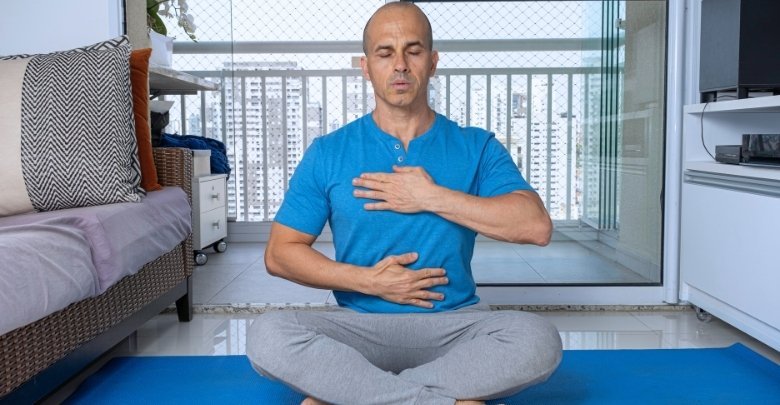If you ever feel stuffy or out of breath, you might find some relief by focusing on how you breathe. Breathing exercises are a simple, medicine-free way to help your lungs. They’re easy to learn and can really help you feel better. But does breathing exercises clear lungs?
Yes, they do! Your lungs become clear with breathing exercises because they loosen up mucus, make it easier for air to pass through, and strengthen your breathing muscles. If you have lung issues like asthma or COPD, diaphragmatic and pursed-lip breathing are really helpful.
Want to know how these exercises work and how to do them? Keep reading to discover some great tips and exercises for healthier lungs.
Does Breathing Exercises Clear Lungs: Key Benefits Explained
Breathing well is important for feeling good and staying active. When lungs work better, your body gets more oxygen. Simple exercises can help clear lungs and make breathing easier every day.
Yes, breathing exercises can clear lungs by helping air flow better, removing mucus, and making breathing muscles stronger. They are easy to do and don’t need any special tools or training. These benefits make breathing exercises helpful for people of all ages and fitness levels.

Helps Move Mucus Out
Mucus builds up in the lungs and blocks airflow, making it harder to breathe and feel good. Breathing exercises loosen that mucus, helping it move out naturally through coughing. Clear lungs let more oxygen in and help you stay more active every day.
Doing this regularly keeps the lungs fresh and less heavy. You don’t need to feel sick to benefit from it. People with asthma or cold often feel better after doing these exercises.
Improves Air Flow
Sometimes, lungs don’t fill all the way with air because of tight muscles or blocked passages. Breathing exercises train your lungs to take in more air fully and gently. This makes it easier to breathe without feeling tight or short of breath.
When air flows easily, you feel more relaxed and calm. It also helps during physical work or even while walking. Your body gets more energy when breathing is steady and smooth.
Makes Breathing Muscles Stronger
Breathing needs muscles too, like the diaphragm and chest muscles. These muscles can grow stronger with regular practice, just like lifting weights strengthens arms. Stronger breathing muscles help lungs work better and longer without getting tired fast.
People who get tired easily from walking or climbing stairs feel the difference. Better breathing improves stamina in daily life and workouts. Over time, this leads to better health and more comfort.
Reduces Feelings of Breathlessness
Some people feel out of breath even with little effort, which can be scary. Breathing exercises help slow your breath and make it deeper, easing that panicked feeling. You start to feel more in control with every breath you take.
This helps especially during flare-ups of asthma or anxiety. When the lungs relax, the whole body feels more at ease. Practicing often can bring lasting comfort in breathing.
Supports People With Lung Conditions
People with asthma, COPD, or similar issues have trouble clearing lungs and getting enough air. Special breathing techniques help them manage symptoms and feel less tired. With the right method, it becomes easier to do daily tasks.
Doctors often recommend these exercises as part of treatment. They don’t replace medicine but add more strength to your lungs. Using both together gives more relief and better results.
Boosts Oxygen Exchange
When you breathe deeply, more oxygen gets into your blood, helping organs work well. Breathing exercises open tiny airways that may be blocked, improving how oxygen moves in and out. Your heart and brain also work better with more oxygen.
This makes a big difference in learning, sports, and focus. With more oxygen, you feel less sleepy or dizzy during the day. That’s why many athletes also use devices like Better Breathing Sport to gain more control and power.
Keeps Lungs Active
Lungs are like balloons — if not used well, they get weak. Breathing exercises keep lungs moving and flexible, keeping them from shrinking or stiffening. It’s important for older people and those who sit a lot.
Even light exercises done while sitting can help. With regular effort, lungs stay healthy and open longer. Good lung health means fewer problems over time.
Common Myths About Breathing and Lung Cleansing
Many people believe strange things about breathing and how to clean the lungs. These myths often spread through social media or word of mouth. They may sound true but can cause confusion or even harm. Learning the facts helps you breathe better and stay healthier.
- Breathing through your mouth gives more air than your nose. This is false since nose breathing filters and controls air better.
- Deep breathing always means more oxygen goes into your body. Oxygen levels stay balanced, and too much deep breathing can cause dizziness.
- Drinking water clears your lungs from inside. Water helps stay hydrated, but it doesn’t directly clean the lungs at all.
- Holding your breath for long can make lungs stronger fast. This can actually cause stress and may harm your breathing pattern.
- Herbal teas remove dirt or toxins from your lungs. No tea can clean lungs, but staying hydrated does help overall lung health.
- Coughing hard will push all mucus out of your lungs. Too much coughing may hurt your throat and doesn’t work like breathing exercises.
- Exercise alone will fully clear your lungs. While helpful, exercise should be combined with good breathing habits for real lung support.
- Cold air always damages your lungs. Breathing cold air feels harsh, but it doesn’t cause lasting damage if you’re healthy and covered.
Best Breathing Exercises to Cleanse Your Lungs
Sometimes your chest can feel tight, like you can’t take a deep breath no matter how hard you try. That’s when it helps to know simple ways to make your breathing feel easier and smoother. There are a few easy breathing exercises that can help clean your lungs. These exercises are safe, calm, and can be done anywhere without needing special tools.

Belly Breathing
Belly breathing is also called deep breathing or diaphragm breathing. You place one hand on your chest and the other on your stomach. Try to breathe so only your stomach moves, not your chest. This helps your lungs fill fully with air and keeps your breathing slow. Doing this often helps your lungs feel stronger and clearer.
Pursed-Lip Breathing
This one is great when you feel out of breath or tired. You breathe in through your nose, then slowly breathe out through your mouth while keeping your lips like you’re blowing a candle. This slows down your breathing and helps push trapped air out of your lungs. It also makes you feel calmer and more relaxed. It’s easy and helpful during walks or light exercise.
Humming Breaths
Humming while you breathe can actually help open your airways. Take a deep breath in, then hum softly as you breathe out. The vibration helps loosen mucus and makes your chest feel lighter. It’s also calming and fun to do when you’re feeling stressed. You can hum your favorite song or just a simple note.
Box Breathing
This breathing style follows four simple steps—inhale, hold, exhale, and hold again—each for the same count. You can think of it like drawing a square in your mind while you breathe. It helps your lungs stay active and steady. It’s also a good way to relax before sleep or during study breaks. Try it for just five minutes and see the difference.
Breath Holding Practice
This method isn’t about holding your breath forever. It’s about gently increasing how long you can hold it after a full breath. It helps train your lungs and gives your body more control over your breathing. Start slow and don’t push too hard in the beginning. With time, performing breathing exercises daily like this can really help keep your lungs clean and strong.
Clearing Cough Technique
Sometimes a simple gentle cough can help push mucus out. Sit straight, take a deep breath in, then give a short, soft cough while keeping your mouth slightly open. This doesn’t hurt your throat like hard coughing does. It works well after breathing exercises because your lungs are already loosened up. Do it carefully so it doesn’t make your chest feel sore.
Who Can Benefit from Breathing Exercises?
Many people think breathing exercises are only for sick folks or athletes. But actually, they can help almost anyone feel better daily. From kids to older adults, these exercises support lung strength and calm the body too.

People with Asthma
Asthma makes it harder to breathe during attacks or physical activity. Breathing exercises relax airways and make breathing smoother and easier. This lowers stress and helps control breathing patterns better. Doing them daily may reduce how often asthma problems happen.
Teens Under Stress
School pressure, phones, and social worries can make teens feel overwhelmed. Breathing slow and deep calms the brain and body naturally. It helps with sleep and focus during studies or exams. Many use these to manage moods without extra effort.
Older Adults
Aging causes lungs to lose strength and hold less air over time. Breathing exercises help them stay active and prevent breathlessness. These gentle movements also improve sleep and relax tight chest muscles. Regular practice keeps the lungs working at their best.
People with COPD
Chronic obstructive lung problems make breathing feel like work every day. Controlled breathing clears mucus and makes air move freely again. Doctors often suggest daily breathing work to manage symptoms. It brings more comfort during walking, eating, or resting indoors.
Athletes and Runners
They need strong lungs to perform better during practice and games. Controlled breathing gives more power and improves endurance over time. It also reduces quick tiredness and increases focus during movement. Many sports programs now include breathing drills in training.
Singers and Performers
Singing long notes or speaking on stage needs strong breath control. Breathing practice helps hold notes longer and speak more clearly. It also helps stop nervousness before shows or events. Many performers train their breath daily just like their voice.
When Should You Consult a Doctor?
Sometimes breathing exercises might not be enough to help with certain symptoms or health issues. If you often feel short of breath even while resting, you should talk to your doctor right away. Pain in the chest, fast breathing, or dizziness after light activity could also mean something more serious. Don’t wait too long if these signs happen often, especially if they disturb your daily life.
You should also get help if you have a health condition like asthma or COPD that isn’t improving with usual care. Ask your doctor about safe breathing techniques and the possible side effects of breathing aids before using anything new. It’s better to be sure than to guess when it comes to your lungs and health. A quick checkup can help you breathe better and avoid any problems early on.
FAQs about Breathing Exercises for Clearing Lungs
Breathing exercises are more than just slow breaths—they can improve lung health, increase airflow, and help remove mucus. Many people have simple questions about how these exercises work and when to use them. Below are 10 common FAQs with clear answers.
Can Breathing Exercises Help During A Cold?
Yes, doing breathing exercises during a cold can help loosen mucus and make it easier to breathe. These gentle movements improve airflow and comfort while you’re healing. They work best when done slowly and regularly during the day.
Are Breathing Exercises Safe For Everyone?
Most people can safely try breathing exercises, but those with serious lung issues should talk to a doctor first. These exercises are gentle, but it’s important not to overdo it. Always stop if you feel dizzy or tired.
How Long Should Each Breathing Exercise Last?
Start with 5 to 10 minutes once or twice a day and slowly increase over time. The key is to stay relaxed and breathe deeply without forcing it. You don’t need long sessions—consistency matters more than time.
Do Breathing Exercises Help Prevent Lung Infections?
They can help by clearing mucus where germs may grow, which lowers the risk of infections. Cleaner lungs can fight off illness better. But remember, good hygiene and rest are also very important for protection.
Can They Help People Who Snore?
Yes, breathing exercises may help reduce snoring by strengthening airway muscles and improving airflow during sleep. They won’t stop all snoring, but regular practice can lead to better breathing habits and smoother air movement at night.
Should I Do Them Before Or After Exercise?
You can do them before exercise to warm up your lungs or after to relax and slow your breathing. Some people also use them during rest breaks. Try both ways and see what works best for you.
Can Breathing Exercises Help Me Sleep Better?
Yes, they calm your body, slow your thoughts, and make it easier to fall asleep. Deep breathing lowers stress and heart rate, making rest more peaceful. Try them before bed as part of your nighttime routine.
Do I Need Special Tools Or Apps?
No special tools are needed—just a quiet space and your breath. However, some people like using apps or timers to stay on track. If it helps you stay focused, feel free to use one that’s simple.
Is It Normal To Feel Lightheaded At First?
Some people feel dizzy when starting, especially if they breathe too fast or too deeply. Always go slow and take breaks when needed. If it keeps happening, stop and check with a healthcare provider to be safe.
Can These Exercises Help With Allergies?
Breathing exercises don’t treat allergies, but they can help you breathe easier during allergy flare-ups. They open your airways and help remove trapped air. Combine them with allergy treatments for better overall breathing comfort.
Closing Remarks
The right way to breathe can make us feel better, but we do not think about it when we breathe. If you have trouble with your lungs, feel stressed, or want to stay healthy, simple breathing exercises can help a lot. So, does breathing exercises clear lungs? Yes, they do!
These exercises remove mucus, improve airflow, and make your breathing muscles stronger. You don’t need any tools, and anyone can try them. Just doing a few minutes every day can make your lungs feel better and help you stay calm and focused. Give it a try—you’ll start feeling the difference soon!






